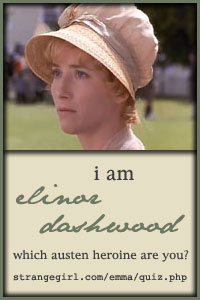“I have made up my mind that I must have money, Pa. I feel that I can't
beg it, borrow it, or steal it; and so I have resolved that I must marry
it.”
Written in 1864-65, Our Mutual Friend would be Charles Dickens' last completed novel. It was in danger of being incomplete as the manuscript was almost lost in the traumatic Staplehurst rail crash. Dickens was lucky to escape not only with his life, but also with the manuscript. Though not considered by critics to be one of Dickens' greatest successes, it remains a favorite with readers. Once again, Dickens challenges the norms of Victorian society and their obsession with money and material possessions.
The Plot:
After building a massive fortune, a mean and cold-hearted miser dies. In his will, he leaves his fortune to his son, John Harmon, from whom he has been estranged for many years. John only gets the fortune if he marries a young woman whom he has never met named Bella Wilfer. But before he can claim his inheritance, he is reported as drowned in the River Thames. The fortune then falls into the hands of Old Mr. Harmon's faithful servants, Mr. and Mrs. Boffin.
As the chaos of the will, John Harmon's death, and Mr. and Mrs. Boffin's new found wealth begin to swirl around London, many people find themselves caught up in it. There is spoiled, but pretty Bella Wilfer who has had her hopes of wealth dashed. There is patient and kind Lizzie Hexham whose father's involvement in the Harmon case places him under a cloud of suspicion. There is Eugene Wrayburn who finds himself drawn to Lizzie in a way he has never felt before. There is the scoundrel Silas Wegg who determines to profit by Mr. Boffin's innocence in money matters. And there is John Rokesmith who takes the position of Mr. Boffin's secretary and loses his heart to Bella. As the story progresses, long hidden secrets come to light, fortunes rise and fall, and people are revealed be different from what they seem.
My Review (Caution - Spoilers):
This was the next novel in my quest to read all of Dickens' works. I greatly enjoy his novels and have heard many good things about this one from other readers. Overall, though I didn't like it as much as some of his other works (Bleak House, Little Dorrit, David Copperfield), I still thought it was a solid read.
One of the most notable aspects of this novel is the symbolism and importance that Dickens gives to water. Like the courts in Bleak House, or Society in Little Dorrit, the River Thames becomes the silent character in this story, guiding the fates of many people. Dickens uses it to symbolize rebirth and renewal time and time again. Many characters face near drowning only to come out of it as new people. John Harmon leaves behind the life his unloving father dictated for him for a life on his own terms and of his own making. Eugene Wrayburn leaves behind an indolent (and somewhat selfish) way of life and instead commits himself to a loving and generous wife in the form of Lizzie Hexham. What I find to be interesting is that Rogue Riderhood, one of the stories' villains, also experiences a near drowning experience. But unlike the other characters, he remains unchanged after the ordeal. Not every "baptism" leads to salvation.
As in his other novels, Dickens takes aim at the faults in Victorian society. In this one, it is mostly the corrupting power of money (and the desire for it). Though we later find that Bella Wilfer is actually a very sweet girl, her desperate need for money is a dark mark on her character for much of the novel. We see the wealth often covers some very greedy and false characters as in the Veneerings (how aptly named), the Podsnaps, and the Lammles. It is the pursuit of wealth that governs the actions of the treacherous Rogue Riderhood and the sneaky Silas Wegg. Even sweet Mr. Boffin appears to allow his newfound wealth to change him into a miserly and miserable man. Dickens shows us that the pursuit and gain of material possessions does not make up for the lack of a kind and generous spirit.
While the sprawling plot is decent enough, I find that what this particular book lacks in comparison with Dickens' other works are truly endearing characters. Though I have become used to underwhelming main characters, there are usually plenty of eccentric side characters to make up for this. I just didn't feel that with this novel. I didn't find any characters that I really loved, or hated, or feared. There was just a bit of blandness that seemed to hover over each one. I didn't feel like any of them would stick with me for a long time.
While I don't consider it one of my favorite works, it was still worth reading. Dickens' writing and plot are as spectacular as ever, and the characters are engaging, if just short of endearing. It is a solid example of his work and one that you should read...after you've read some of his best ones.
The Movie:
There have been three TV serials made from this story. The first was in 1958 and stars Paul Daneman, Zena Walker, and David McCallum. Another was done in 1976 and stars Jane Seymour, John McEnery, and Nicholas Jones.
The last one was done in 1998 and stars Keeley Hawes, Steven Mackintosh, Timothy Spall, and David Morrissey. I have seen this one and found it to be a solid adaptation. The plot was handled well, and the cast was excellent. A worthy companion to the novel.

















No comments:
Post a Comment